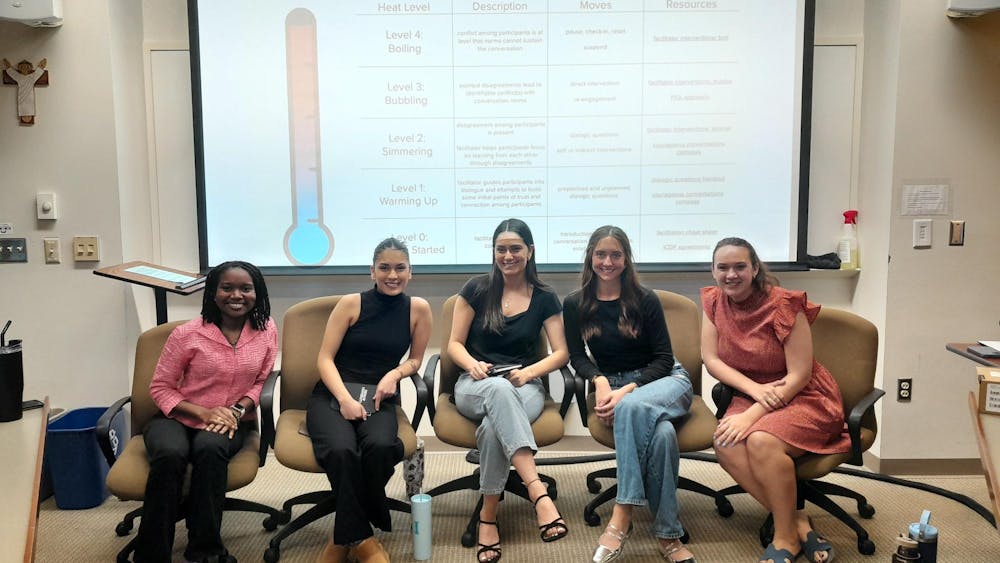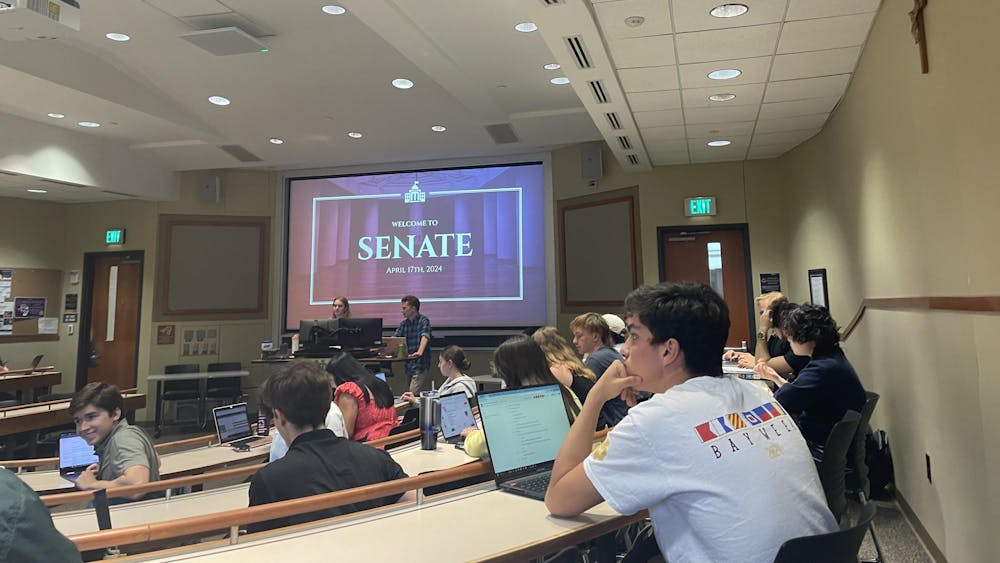Saint Mary’s hosted an interdisciplinary panel Monday night called “Let’s Talk About Sex.” Sponsored by the gender and women’s studies department, the event featured professors from the English, nursing science, biology, history and gender and women’s studies departments.
Suyun Choi, professor of gender and women’s studies, started the talk by welcoming everyone and introducing herself as the moderator for the night’s session. She explained that the purpose of the panel is to talk about sex in different aspects through different disciplines and “get an intellectual understanding and sensibility of how our sexuality is construed and practiced and even regulated in a specific time and space.”
Jamie Wagman, professor of both gender and women’s studies and history, spoke first to give her presentation titled “Sex Education, Visual Culture and Social Constructions of Gender, Sexuality and Race.”
Wagman explained how she uses “sex education guides from gender history archives to expose students to the ways that different interest groups have understood and made assumptions about race, gender and sexuality through the latter half of the 20th century.”
She said that some of this “propaganda” included things such as bans for sex education textbooks, the idea of birth control as a communist plot and the binary of good and bad sex. Wagman said that different forms of pop culture helped portray the ideal of the white heterosexual family and the consequences of stepping outside this mold.
“Philip Kaufman’s 1978 version of ‘Bodysnatchers’ uses sexuality as an overt scare tool,” Wagman said before continuing to say that there is a theme “that the nation’s loose sexual mores are the impetus for this visit.”
Julia Dauer, English professor, spoke next with her presentation about reading stories of sex and sexuality from 19th-century America.
She started by posing two questions. The first was ‘How do we read for queer sex and sexuality in pre-1900 American literature and culture?’ and the second was ‘How can we read stories of queer sexuality that become visible in archives of criminality?’
Dauer said the challenges with the first question have to deal with “language, with so-called identity and with methodology.”
“Another big challenge is that reading for something like sex or sexuality requires us to think about and question what we mean by these terms in the first place,” Dauer said.
Biology professor Vanessa Young introduced a scientific angle to the conversation with a presentation entitled “Diversity in Nature,” focusing on animal sex and reproduction.
Young first provided an overview of the variety of ways reproduction happens in nature such as sexual forms like hermaphroditism, where a species has both male and female reproductive systems. She also talked about asexual reproduction such as parthenogenesis, “reproduction in which embryos develop without fertilization.”
Young talked about how for some species, particularly types of fish and reptiles, gender “is determined by the environment in which those embryos develop. So in many fish and reptiles, that’s often going to be the temperature of the eggs during development.”
“However in other animals like birds and mammals, offspring sex is determined genetically by a combination of sex chromosomes.”
Young went on to describe the different chromosome setups and not only what that means for gender but also how it varies for different species.
“I’m here to maybe contradict that idea,” Young said about the notion that there is a specific binary in humans caused by chromosomes.
“Human embryos actually have no sexual difference until after six weeks of development when that last pair of chromosomes join to form that typical pair,” Young said. “It’s actually possible for individuals to receive more than one copy or even no copies of those X and Y chromosomes from the parents and this can result in a variety of chromosomal combinations.”
Young concluded that she hopes these examples illustrate “that sex really is a continuum much more so than a categorical definition.”
To wrap up the panel, nursing professor Cibele Webb spoke about sexuality and person-centered care.
Webb began by reciting the World Health Organization’s definition of sexuality, quoting that “sexual health is fundamental to overall health and well-being of individuals and to the social and economic development of communities and countries.”
Webb explained that person-centered care “takes into consideration that some individuals distrust the healthcare system and healthcare providers as a result of previous trauma or historical trauma.”
Person-centered care “involves recognizing the patient as the source of control and full partner in providing compassionate and coordinated care, based on respect for the patient’s preferences, values and needs.”
The previous model was the disease-based approach to healthcare that, in regard to sexuality, focused on the negative consequences of sex, “such as developing an HIV infection or acquiring sexually transmitted diseases,” Webb said. Patient-centered care helps reduce stigma and empower patients, as well as “increase their interest in sexual health-related resources,” she added.
“Sexual health is an important component of overall health that health care providers should address as part of routine health visits,” Webb said, before going on to talk about what healthcare providers can do to make a more welcoming environment, such as being understanding to any experience, avoiding assumptions and not using polarizing language.
Students are encouraged to let the gender and women’s studies department know of any future topics they would like to see in the “Let’s Talk About Sex” panel series.













